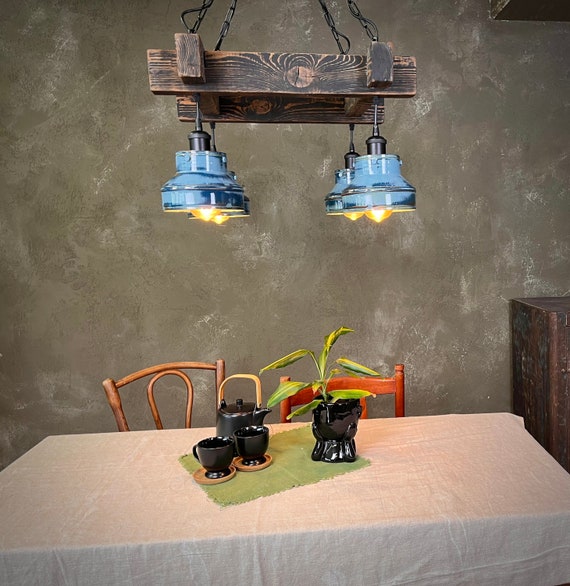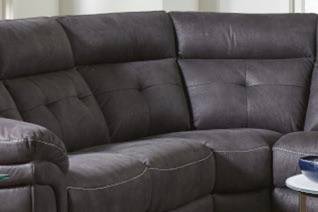As an Amazon Associate I earn from qualifying purchases.
Metal furniture often undergoes a finishing process to enhance durability and aesthetics. Zinc plays a crucial role in this process.
Zinc finishing, or ionizing, is common in metal furniture production. This method protects against rust and corrosion, extending the furniture’s lifespan. Additionally, zinc adds a sleek, modern look to metal pieces. Whether for indoor or outdoor use, zinc-finished furniture stays resilient.
Understanding this process helps in choosing long-lasting, stylish metal furniture. Dive into the specifics of zinc finishing and its benefits for your furniture choices. Discover why this method is preferred for metal items.
Introduction To Metal Furniture Finishing
Metal furniture is popular for its durability and modern look. But to keep metal furniture looking great, it needs proper finishing. Finishing protects the metal from rust and wear. It also gives the furniture a polished, attractive appearance. Zinc finishing is one common method used to protect metal furniture. Let’s delve into why finishing is important and the methods used.
Importance Of Finishing
Finishing adds a protective layer to metal furniture. This layer guards against rust, corrosion, and other damage. Without proper finishing, metal can quickly degrade. This can shorten the lifespan of your furniture. Finishing also enhances the look of the furniture. It can add a shiny or matte finish, depending on your preference. Finishing ensures your furniture remains sturdy and appealing for years.
Common Finishing Methods
There are several methods to finish metal furniture. Each method offers unique benefits. Here are some common finishing methods:
- Zinc Plating: This involves coating the metal with a layer of zinc. Zinc protects the metal from rust and corrosion.
- Powder Coating: A dry powder is applied to the metal. The powder is then heated, forming a protective layer. Powder coating is available in many colors.
- Electroplating: This method uses an electric current to coat the metal. It provides a smooth, durable finish. Metals like chrome and nickel are often used in electroplating.
Each of these methods provides strong protection. They also enhance the appearance of the furniture. Choose a method that best suits your needs and preferences.

Credit: www.amazon.com
Benefits Of Zinc Coating
Metal furniture often undergoes various treatments to enhance its longevity. Zinc coating is one such treatment. It offers numerous benefits to metal furniture.
Corrosion Resistance
Zinc coating protects metal furniture from rust. It creates a barrier against moisture and air. This keeps the metal underneath safe. Zinc also acts as a sacrificial layer. It corrodes instead of the metal. This prolongs the life of the furniture. Even in harsh environments, zinc ensures durability.
Durability Enhancement
Zinc coating adds strength to metal furniture. It makes the surface harder. This means fewer dents and scratches. Zinc also helps resist wear and tear. Furniture lasts longer and looks better. This makes it ideal for heavy use.
Zinc Coating Techniques
Zinc coating techniques protect metal furniture from rust and corrosion. These methods create a durable, long-lasting finish. Let’s explore two popular zinc coating techniques.
Hot-dip Galvanizing
Hot-dip galvanizing involves dipping metal into molten zinc. The process forms a thick, protective layer. This layer shields the metal from moisture and air. It provides excellent rust resistance. This technique is ideal for outdoor furniture. The zinc coating can last for decades.
Electroplating
Electroplating uses an electric current to apply zinc. The metal piece is placed in a zinc solution. An electric current causes zinc to bond with the metal. This creates a thin, even coating. Electroplating offers a smooth finish. It is suitable for indoor furniture. This method is also cost-effective and efficient.
Comparing Zinc Coating And Other Finishes
Choosing the right finish for metal furniture is crucial. It affects both durability and appearance. Zinc coating is a popular choice. But how does it stack up against other finishes? Let’s explore the options.
Powder Coating
Powder coating involves applying a dry powder to the metal surface. The powder is then heated to form a smooth, hard finish. This method offers several advantages:
- Durable and resistant to chipping
- Available in many colors
- Environmentally friendly
Powder-coated surfaces are often used for outdoor furniture. This is because they can withstand harsh weather conditions.
Anodizing
Anodizing is another finishing process. It involves an electrolytic process that increases the thickness of the natural oxide layer on the metal. This finish is commonly used on aluminum. Key benefits include:
- Corrosion resistance
- Improved surface hardness
- Enhanced aesthetic appeal
Anodized surfaces are often found in commercial and industrial settings. They provide a sleek, modern look.
Zinc Coating
Zinc coating, also known as galvanization, involves applying a layer of zinc to the metal surface. This offers unique benefits:
- Excellent corrosion resistance
- Long-lasting protection
- Cost-effective
Zinc-coated surfaces are common in outdoor and industrial environments. They protect metal from rust and wear.
Each finishing method has its advantages. Choose the one that best fits your needs.
Best Practices For Zinc Coating
Zinc coating is essential for metal furniture. It protects against rust and corrosion. Following best practices ensures durability and a smooth finish.
Surface Preparation
Proper surface preparation is the first step. Clean the metal thoroughly. Remove dirt, grease, and rust. Use a degreaser or solvent cleaner.
For stubborn rust, use sandblasting or wire brushing. Ensure the surface is dry before applying zinc. Moisture can affect adhesion.
Application Process
The application process involves several steps. Apply a primer first. It helps the zinc coat adhere better.
Here are the steps:
- Clean the surface.
- Apply a primer.
- Use a brush or spray to apply zinc.
- Allow drying time between coats.
- Inspect for any missed spots.
Ensure even coverage. Overlapping strokes with a brush or spray help. Multiple thin coats are better than one thick coat.
Use proper ventilation. Zinc fumes can be harmful. Wear protective gear like masks and gloves.
Following these best practices ensures a long-lasting zinc coating. Your metal furniture will stay protected for years.

Credit: www.etsy.com
Maintenance Of Zinc-coated Furniture
Zinc-coated furniture boasts a unique charm and excellent durability. With proper care, it can last for many years. Regular maintenance ensures your furniture retains its appeal and remains in good condition.
Understanding the maintenance of zinc-coated furniture involves two main aspects: cleaning and repairing. Let’s explore these aspects in detail to keep your furniture looking its best.
Cleaning Tips
Keeping your zinc-coated furniture clean is simple. Use a soft cloth dampened with warm water. Avoid using harsh chemicals as they can damage the zinc coating.
For stubborn stains, mix a mild soap with water. Gently scrub the area with a soft brush. Rinse thoroughly with clean water to remove any soap residue. Dry the furniture with a clean cloth to prevent water spots.
Repairing Damage
Zinc-coated furniture may get scratched or chipped over time. Small damages are easy to repair. First, clean the damaged area with a soft cloth.
Then, use a zinc-rich touch-up paint to cover the scratch or chip. Allow the paint to dry completely. This will restore the protective layer and prevent rust.
For larger damages, consider professional repair. They can ensure the restoration maintains the furniture’s integrity and appearance.
Environmental Impact Of Zinc Coating
The use of zinc coatings on metal furniture raises environmental concerns. Zinc coating protects metal from corrosion. Yet, it impacts the environment in various ways. Understanding these effects helps in making informed choices.
Sustainability Concerns
Zinc mining and refining processes release pollutants. These processes harm the environment. Emissions from zinc production contribute to air and water pollution. The mining activities also disturb natural habitats. This affects wildlife and ecosystems.
Zinc is not renewable. Its extraction depletes natural resources. This raises concerns about long-term sustainability. To reduce harm, it’s crucial to manage zinc use wisely. Opting for recycled zinc can lessen the environmental footprint.
Recycling Considerations
Recycling zinc-coated metal furniture can mitigate environmental impacts. Recycling reduces the need for new zinc extraction. This conserves natural resources and lowers pollution. The recycling process for zinc is energy-efficient. This makes it a sustainable option.
Zinc can be recycled multiple times without losing quality. This extends the life of the metal. It also minimizes waste. Encouraging recycling practices helps protect the environment. Consumers should seek products that support recycling initiatives.
Conclusion And Future Trends
Metal furniture has evolved significantly over the years. Zinc finishing and ionization techniques play a key role in their durability. As we look towards the future, it’s important to consider the innovations in coating technology and market outlook. These trends will shape the way we produce and use metal furniture.
Innovations In Coating Technology
New technologies in coating and finishing are emerging. These advancements aim to enhance the longevity and appearance of metal furniture. One promising technology is nano-coatings. These coatings provide an extra layer of protection. They are resistant to scratches and corrosion.
Another innovation is eco-friendly coatings. These coatings reduce environmental impact. They use fewer toxic chemicals. This is important as more consumers prefer sustainable products.
Market Outlook
The market for metal furniture is growing steadily. By 2025, it is expected to see significant growth. This growth is driven by several factors:
- Increasing demand for durable furniture
- Rising awareness of eco-friendly products
- Advancements in technology
Manufacturers are investing in research and development. They aim to create products that meet consumer needs. This includes improving design and functionality. The use of zinc finishes and ionization will continue to be a key trend.
As the market evolves, businesses must stay updated. They should adopt new technologies and meet consumer demands. This will ensure their success in the competitive market.

Credit: www.instagram.com
Frequently Asked Questions
What Is Zinc Finish On Metal Furniture?
Zinc finish on metal furniture provides a protective layer. It helps prevent rust and corrosion. Zinc coating is durable and long-lasting.
How Is Metal Furniture Zinc Coated?
Metal furniture is zinc coated through galvanization. This process involves applying a layer of zinc. The zinc layer prevents rust and corrosion.
Why Choose Zinc Finished Metal Furniture?
Zinc finished metal furniture is rust-resistant. It has a long lifespan. The zinc coating adds durability and strength.
Is Zinc Coating Environmentally Friendly?
Yes, zinc coating is environmentally friendly. Zinc is a natural, recyclable material. It reduces the need for frequent replacements.
Conclusion
Choosing between metal furniture finished or ionized with zinc depends on your needs. Zinc coating offers durability and rust resistance. This makes it ideal for outdoor furniture. On the other hand, regular finishes can provide a stylish look. They may require more maintenance over time.
Consider your environment and usage before deciding. Both options have their benefits. Make an informed choice for long-lasting furniture.
As an Amazon Associate, I earn from qualifying purchases.

